Low-fat fish for the diet is used both as a tasty delicacy, and for variety in the menu, and to fill the deficiency essential minerals, vitamins, microelements. The fairly serious popularity of seafood has become the reason that many people losing weight do not think at all about what kind of fish they can eat while losing weight, considering all types and varieties acceptable for consumption.
In fact, not every fish is considered as a basic ingredient for creating a balanced but low-calorie menu. It is also necessary to understand that dietary fish dishes prepared using different technologies differ in calorie content.
For example, you can compare boiled fillet river fish and smoked sturgeon. These are two radically opposite products in terms of benefits for the human body.
The benefits of fish
 It is safe to say that all seafood (provided that it is fresh and properly prepared) is beneficial for the human body. Low-fat fish varieties are ideal for the diet and also retain their nutritional and beneficial qualities.
It is safe to say that all seafood (provided that it is fresh and properly prepared) is beneficial for the human body. Low-fat fish varieties are ideal for the diet and also retain their nutritional and beneficial qualities.
Fish is a source of high quality protein. It is quickly absorbed by the body, which cannot be said about meat products rich in proteins. If for digestion meat dishes to the human body It will take up to 3 - 4 hours, then the digestive tract will completely process the low-fat fish snack in no longer than 2 hours.
Since these foods are considered quite filling, even while on a strict diet, a person will not experience an obsessive feeling of hunger. A fish diet does not allow the body of a losing weight person to be in a state of stress. A full stomach will allow the body to function as usual, without storing lipid cells “in reserve.”
Secrets of centenarians
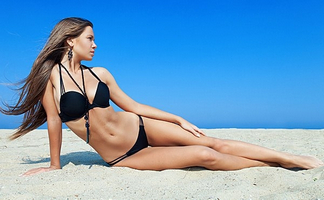 Japan is a country of long-livers. Indeed, they feel good, look young, and live long. Many experts attribute this fact to the fact that the country's residents constantly consume seafood. When losing weight and more, fish will help maintain the health of the thyroid gland, ensure sharp vision for a long time, boast healthy skin, strong nails and shiny hair.
Japan is a country of long-livers. Indeed, they feel good, look young, and live long. Many experts attribute this fact to the fact that the country's residents constantly consume seafood. When losing weight and more, fish will help maintain the health of the thyroid gland, ensure sharp vision for a long time, boast healthy skin, strong nails and shiny hair.
Most varieties of seafood products contain the following valuable components:
- fatty acid;
- vitamins;
- phosphorus;
- zinc;
- calcium;
- magnesium;
- fluorine.
Fish varieties
A fish diet requires a competent selection of delicacies with a minimum calorie content.
I conditionally divide all varieties into three global categories:
| Fatty varieties | Fat level above 7%. Some delicacies are even fattier than pork (halibut, mackerel, eel, some varieties of herring, stellate sturgeon, sardines, sturgeon). |
| Varieties with medium fat content | Typically, the fat level ranges from 5 to 7%. Such fish for weight loss can only be used in limited quantities (trout, tuna, pink salmon, some types of herring, catfish, sea bass, bluefish, rainbow trout, catfish, capelin, carp, salmon, coho salmon, sockeye salmon, chinook salmon, chum salmon). |
| Low-fat varieties | Typically, such fish can be eaten on any diet. All species do not have a high fat content - no more than 5% (cod, blue whiting, pollock, navaga, river perch, pike, burbot, carp, asp, tilapia, halibut, hake, scallops, flounder, haddock). |
Low-fat fish for the diet, the list of which can be continued, is convenient for culinary processing in different modes. Nutritionists advise creating a menu with at least 3 – 4 fish dishes per week. If you have any doubts about a particular variety, you can always consult with a specialist about what kind of fish is best to eat on your diet.
The secret to recognizing fat content
 A fish diet for weight loss, the menu of which should be tasty and varied, should also include seafood. Mussels, oysters, lobsters, shrimp, and crayfish are considered dietary.
A fish diet for weight loss, the menu of which should be tasty and varied, should also include seafood. Mussels, oysters, lobsters, shrimp, and crayfish are considered dietary.
Nutritionists advise distinguishing foods by their fat content and color. The lighter the fillet, the lighter it is. The richer and darker the color, the more fat there is in the product. For example, herring, mackerel and salmon are distinguished by a special noble color, indicating a rich composition of fatty elements.
Considering the fact that fatty fish are the healthiest, small portions of relatively fatty foods are allowed on the menu. When on a diet, completely eliminating fats from the diet is also undesirable, therefore, it is better to use fish as a source of fatty acids than animal products or plant origin.
Minimum carbohydrates
The lower the fat percentage, the lower the carbohydrate level. When choosing which fish is best to cook, you should pay attention to this indicator.
According to the degree of calorie content, all varieties can also be divided into three categories:
Maximum protein
A fish diet allows you to fully saturate your body with protein. Largest quantity proteins contain tuna, perch, flounder, horse mackerel. Slightly less of these elements are found in fillets of blue whiting, pike, pike perch, and roach. Quite a small protein content in flounder, bream, hake, pollock etc.
Gastronomic secrets
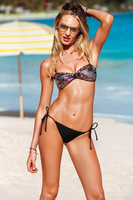 Even the lowest-calorie and low-fat fish when losing weight will not give the beneficial effect that was expected if it is not prepared correctly. It is unlikely that the most ordinary cod, deliciously fried in a frying pan, can claim the title of a dietary dish.
Even the lowest-calorie and low-fat fish when losing weight will not give the beneficial effect that was expected if it is not prepared correctly. It is unlikely that the most ordinary cod, deliciously fried in a frying pan, can claim the title of a dietary dish.
If you have questions about what kind of fish you can eat on a diet and how best to cook it, it’s better to Once again Seek advice from a nutritionist. An expert will be able to advise such combinations of products and processing techniques that will bring invaluable benefits to the figure, as well as to human health in general. For a fish diet to be truly effective, it is important to think through everything down to the smallest detail.
About the Dukan system
One of the most famous dietary practices, the Dukan system, very eloquently reveals the beneficial qualities of seafood. At the first stage, the founder of the method focuses on the fact that protein foods should be consumed, neglecting carbohydrates and fats. A fish diet is ideal for the first phase. In the following stages, the Dukan system allows you to virtually freely use fish delicacies. The prerogative of marine and river inhabitants.
Is it worth boiling the fillet?
 Perhaps the simplest way to process seafood, which is acceptable for dietary nutrition, is to boil fillets. A fish diet allows you to introduce boiled tuna, flounder, haddock, and cod into the menu.
Perhaps the simplest way to process seafood, which is acceptable for dietary nutrition, is to boil fillets. A fish diet allows you to introduce boiled tuna, flounder, haddock, and cod into the menu.
You can also treat yourself to shrimp or crabs from time to time. Anyone who has ever been to large fish markets, where they offer fresh goods, will not have any difficulty filling the menu with delicious dishes.
Fillet can be either boiled in water or steamed. Such fish, even on a diet of the highest severity, will retain its taste, benefits, as well as dietary qualities. Products may be baked, cooked in a slow cooker, and occasionally grilled. Smoked and fried vegetable oil dishes are strictly prohibited.
Still have questions? Use the search!
Proper nutrition is impossible without eating fish - all nutritionists agree on this. She is an excellent protein supplier, useful microelements and vitamins. But for those who are forced to count calories, only low-fat varieties of fish are suitable, the most suitable for the diet, if available. excess weight, hypertension, high cholesterol and similar problems. You should also avoid smoked or fried fish fillets, or prepare them in a special way.
What fish is considered low-fat?
The percentage of fat content in dietary fish fillets should not exceed four units. Cod is unanimously considered the leanest fish, containing only 0.3 g of fat per hundred grams of product. Next come haddock and pollock (0.5 g/100 g), hake (0.8 g/100 g), pollock (2 g/100 g), roach, pike and bream (3-4 g/100 g). A large percentage of the composition here is occupied by protein, which is much easier to digest and much more difficult to convert into fat deposits. Also, low-calorie fish fillets contain amino acids, B vitamins, selenium and phosphorus, iodine and calcium and a number of other useful substances.
White lean fish is indicated for those who are at risk of heart disease, heart attacks and strokes. It significantly reduces the likelihood of such pathologies occurring. Those who regularly eat lean fish fillets have an excellent cardiac system as a whole; they do not suffer from arrhythmia or pressure surges. Such people have a good metabolism and do not have problems with high cholesterol or excess weight. They suffer less from depression, chronic fatigue syndrome, absent-mindedness and forgetfulness.
Rules for eating low-fat fish for diet
Lean fish for the diet can be included in the diet every day,  The recommended dosage is no more than 300 g of fish daily. Fish fillets can be baked, stewed or boiled, but not fried, otherwise the fish is saturated with unnecessary additional fats, carcinogens and loses a huge part of its vitamins. The ideal side dish for it would be vegetables in any form or some low-calorie foods, for example, low-fat cheeses, which are more or less acceptable on a weight loss diet. Must be taken into account total calories fish dishes, not energy value only one product. Heat treatment of fish should last at least 20 minutes; large carcasses should be cooked, cut into portions.
The recommended dosage is no more than 300 g of fish daily. Fish fillets can be baked, stewed or boiled, but not fried, otherwise the fish is saturated with unnecessary additional fats, carcinogens and loses a huge part of its vitamins. The ideal side dish for it would be vegetables in any form or some low-calorie foods, for example, low-fat cheeses, which are more or less acceptable on a weight loss diet. Must be taken into account total calories fish dishes, not energy value only one product. Heat treatment of fish should last at least 20 minutes; large carcasses should be cooked, cut into portions.
womanadvice.ru
About the calorie content of fish - which fish to choose for your diet
Not everything that is fatty is harmful. At least if we're talking about about fish. Contained in fish oil substances have a beneficial effect on human health and are very beneficial for the skin.
However, fatty fish is not suitable for diet due to its high calorie content. We decided to find a middle ground and find out what types of fish are suitable for the daily menu of a losing weight person.
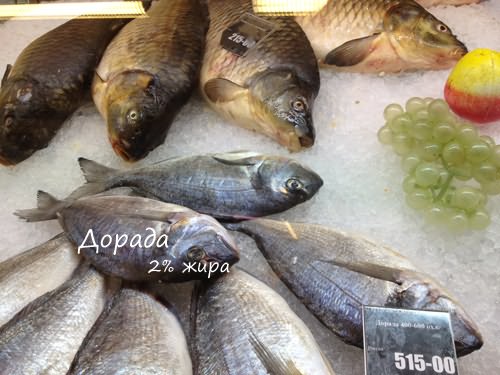
The calorie content of fish depends on its fat content. All fish can be divided into three groups: fatty, medium fat and “skinny”.
Fatty fish include salmon, mackerel and herring.
If you are losing weight, it is better not to include these types of fish in your menu. Their calorie content is too high. For example, 100 grams of mackerel accounts for 190 kcal. Almost like bread. It's a lot.
Carp, tuna, sturgeon, sardine and trout have a medium level of fat content. These varieties contain about 90 kcal per 100 g. and are suitable for the daily diet. However, if your goal is weight loss, it is better to pay attention to the next group.
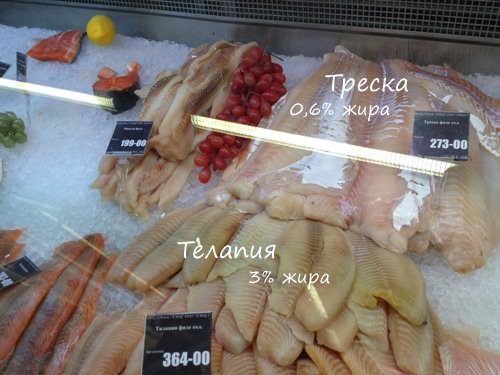
“Skinny” fish, that is, the least high-calorie fish, include cod, flounder, perch, pike and all varieties of mollusks and crustaceans, the so-called seafood - shrimp, squid, octopus. These are the lowest-fat, true dietary fish varieties that can be safely included in any diet. Lots of protein and few calories - that's it distinctive features this group of fish.
IN example of lung dietary dish can be given green salad with squid. Lettuce leaves and watery vegetables are very low in calories, squid is low in calories and high in protein - just what you need for a late diet dinner.
- Dietary fish dishes
- Diet lunch with cod - recipe
- Salad with shrimp and avocado
dietplan.ru
TOP 10: the healthiest fish for your diet - Nutrition - Let's become beautiful! - Articles - Bodyflex - a beautiful figure in 15 minutes a day
What fish is the healthiest and how to cook fish for a dietIn order for food to bring only benefits to a person, you need to be able to eat correctly. After all, our body, receiving unnecessary and harmful substances, accumulates negative energy, toxins and waste. This is where problems with excess weight arise. Find out which is the healthiest fish in your diet that will help improve your health, improve metabolic processes in the body and lose weight! As an essential food product, fish has earned respect due to the presence of Omega-3 fatty acids in it. The main properties of these polyunsaturated acids for humans are strengthening the immune system, increasing the body’s resistance to viral infections, and improving the activation of positive brain functions. Fatty acids thin the blood, which prevents the formation of blood clots, normalize fat metabolism and reduce cholesterol concentrations. Fish is an easily digestible protein product with a lot of vitamins, useful micro- and macroelements. Another advantage of fish is that it contains practically no carbohydrates - the ardent enemies of a slim figure. Fish by fat contentDepending on the fat content, all fish are divided into fatty, moderately fatty and lean. Fatty fish contains more than 9% fat, medium-fat fish contains 4-8%, and skinny fish contains up to 4% fatty substances. The benefits of fatty varieties are mainly determined by the large amount of Omega-3. But you should still abstain from halibut, salmon, salmon, herring and mackerel meat while on a strict diet. A regular weight loss diet can allow you to eat such fish once a week. The optimal fish for fat content are pike perch, trout, carp, horse mackerel, pink salmon, sardine, tuna, and catfish. This category can be used in the diet menu 2-3 times a week, but there are some restrictions for those who suffer from gastritis. Lean fish that is ideal for those looking to lose weight overweight, has no contraindications. The most useful fish in this group are cod, hake, flounder, pollock, and blue whiting. You can eat it daily in medicinal menus or while on a diet for the purpose of losing weight. What is the value of some fatty fish?SalmonSalmon is a fatty fish and is considered one of the most delicious. The tender, sweetish meat simply melts in your mouth, and the pleasant subtle aroma of the prepared dishes will attract even those who are not particularly fans of fish. The predominance of fatty acids in salmon prevents age-related memory problems. Salmon is also rich in phosphorus, magnesium, vitamins B6 and B12, which makes it very useful for arrhythmia and obesity. HerringHow can you not be tempted by a dinner of meaty herring and baked potatoes? Moreover, both products are considered beneficial for nutrition. Herring contains significant amount vitamins A, B, PP and D, iodine, phosphorus, as well as the same essential Omega-3. Herring can not only be pickled, but also baked in parchment, stewed and even made into cutlets! BelugaAbout 20% of the beluga's total mass is made up of easily digestible proteins. Its meat is considered a delicacy. The advantage of this fish is the presence of methionine, an amino acid that helps eliminate toxins, normalizes liver function, and prevents the leaching of calcium from the body. SalmonSalmon can confidently be classified as the most valuable product for men. Due to the selenium content in it, which has a beneficial effect on reproductive function, the likelihood of conceiving a child increases. The valuable composition of nutrients slows down skin aging, normalizes blood circulation, and strengthens the walls of blood vessels. Low-fat fish - ideal for weight loss menusZanderIN zander very little fat and a lot of protein, so by consuming its meat, your figure will be in in perfect order. Delicious dishes from pike perch normalize the water-salt balance in the body. This fish is useful for people suffering from diabetes and allergies. This valuable vitamin complex can eliminate tension and improve blood circulation. TroutFans of fish cooking devote a special place to this pink fish. Trout meat has few bones, almost all its parts are edible. The flesh of the fish is juicy and has a delicate taste, and the caviar is valued as a delicacy. The essential Omega-3 acids in its composition cleanse blood vessels of cholesterol, and caviar can relieve diathesis. Trout is considered the healthiest sea fish, an excellent medicinal and dietary product. TunaDid you know that tuna consumption is at the forefront in Japan? And tuna sushi has gained recognition in many countries. Tuna is a fish that does not harbor microorganisms. Its meat is rich in riboflavin, which supports healthy hair and nails. The vitamin E it contains is a good antioxidant and anti-allergen, and vitamin B12 is a protector against anemia. Lean fish – no restrictions for any dietCodCod is a very tasty and nutritious dietary fish that has virtually no waste. Its liver occupies a special place in terms of nutritional value. Cod is rich in iodine, fluorine, potassium, phosphorus, and contains a number of B vitamins. Eating cod helps reduce appetite, activates performance and strengthens the nervous system. PikeLow-calorie pike meat - soft, juicy and lean - is valued for its high content of natural antiseptic. The main benefits of fish are elements such as vitamins A and B, choline, folic acid, magnesium, phosphorus, selenium. Most delicious way Its preparation involves stuffing and then baking in foil. Pike makes an excellent aromatic dietary fish soup. HakeThe familiar hake fish is an excellent option for dietary dishes. Its high-calorie pulp contains easily digestible protein, vitamins, minerals and trace elements. Rich useful composition Lean fish normalizes blood sugar and blood pressure, and also improves the functioning of the thyroid gland. Hake fillet has virtually no bones, so it is suitable for baby food. What is the best way to cook fish?Thanks to a fish diet, the metabolism in the body is normalized, as a result of which a person begins to lose unnecessary pounds. Fish of all three categories is included in the menu of most weight loss diets, since fish oils are easily absorbed by the body and have a high nutritional value, but only if you have the right approach to preparing fish dishes! Oily and medium-fat fish are best prepared by stewing with the addition of citrus juice. A moderate addiction to pickled red fish is also allowed. From meat of medium fat content, fish will be obtained juicy cutlets steamed, as well as fish and vegetable meatballs stewed in a light sauce. No special knowledge is required on how to prepare fish for a diet from low-fat varieties. It can be stewed, boiled, baked, made into soufflés and casseroles. Dietary fish soups You can also cook only from low-fat individuals. Fish dishes combined with a variety of stewed vegetables, bell peppers, cucumbers, zucchini, leaf salads, Chinese cabbage, celery, green peas and corn with added olive oil. You need to cook fish with minimum quantity salt. Its lack is compensated for by fragrant herbs and greens. Drinking enough liquid will improve the effectiveness of the fish diet. What is the value of fish for the female body?Fish containing a large number of vitamin D and nicotinic acid (mackerel, herring, trout, hake, cod liver) - this is the healthiest fish for women expecting a child. Vitamin D is involved in the formation bone tissue, and nicotinic acid (vitamin PP) prevents abortion. Unsaturated Omega-3 acids can fight the development of cancer in women. Eating trout during PMS or menopause improves well-being and mood. The presence of fish in the daily diet instead of meat dishes reduces the susceptibility to cellulite. Masks and creams based on trout and tuna fatty acids have a rejuvenating effect, moisturize and improve skin color, and smooth out wrinkles. When buying fish, check its freshness, as within a few hours after catch, chemical processes begin to occur in it that can lead to spoilage. Fresh fish has light eyes, bright red gills and clear, odorless mucus. You should choose frozen fish using the same parameters. Frozen fish should be thawed in cold water, because when warm it becomes soft. To remove the smell of mud, the water needs to be slightly salted. To easily free live fish from scales, before cleaning it should be dipped in warm water. Healthy fish added to the diet will prevent you from starving and will make adjustments to your diet. Author of the article Lesya Logvinenko |
mybodyflex.ru
Fish diet - how to choose healthy fish for weight loss
Have you ever wondered why the inhabitants of Oceania and Japan have the most centenarians? The main reason is the consumption of sea fish. It contains valuable fatty amino acids Omega-6 and Omega-3.Also, along with amino acids and fats, fish contains an abundance of vitamins (A, D, B1, B2, B3, and B12), minerals, trace elements, phosphorus, zinc, calcium and iodine, which are important for the normal functioning of the body.
Fish is a supplier of high-quality protein, the specific gravity of which is 25%, but the most valuable thing is that it is a rich and unique source of Omega-3 from a series of polyunsaturated fatty acids (ERF and DNA).
And vitamin D, found in fish, helps absorb calcium and phosphorus in the body and is responsible for the strength of teeth and bone tissue. Non-fatty fish is used in low-calorie diets for weight loss, since the body receives a lot of protein and little fat. For example, cod contains only 73 kcal, sardines 124 kcal, trout 102 kcal.
Fish is digested in the human stomach almost 30% faster than meat. It will take the body 2-3 hours to digest fish, and 3-4 hours for meat.
Useful properties of fish
Fish contains the Omega-3 amino acid. Not a single product contains it in such quantity. Yes, I don’t argue, there is omega-3 of plant origin, found in seeds and nuts, but the amino acid obtained from fish is much healthier!
And thanks to the amino acids, vitamins, and microelements it contains, it has the following beneficial properties:
- Antitumor properties, especially for colon, prostate and breast cancer.
- Reduces the risk of heart disease and angina pectoris, removes blood clots in blood vessels, which can later turn into sclerotic plaques.
- Helps reduce blood pressure and the risk of stroke.
- Fish is good for pregnant women. Doctors have found that women who eat fish during pregnancy are much less likely to suffer from miscarriages and premature births.
- With regular consumption of fish, it improves its performance the immune system body. And old people who often eat fish are not prone to developing dementia, and all this is thanks to the amino acids contained in it.
- People on a fish diet lose fat faster than those who try to lose weight on other diets.
Which fish is best for weight loss?
Quite often, to lose weight, nutritionists advise changing meat to fish in your diet. However, in this case, the choice of fish must be taken seriously, since some varieties can exceed even fatty pork in calorie content.
♦ fatty varieties(from 8% fat) - eel, mackerel, halibut, fatty herring, sturgeon varieties. The calorie content of this group ranges from 200 to 250 kilocalories for every 100 grams of product. And the calorie content of lean pork is 120 kcal. Feel the difference!
♦ medium fat varieties(4-8%) - pink salmon, lean herring, catfish, pike perch, trout, carp, horse mackerel, tuna, sea bass, lean herring, pink salmon. The calorie content of this group is 100 - 140 kcal per 100 grams.
♦ low fat varieties(up to 4%) - bream, pike, pollock, hake, flounder, cod, river perch, navaga. The calorie content of this group is 70-100 kcal.
Fatty fish from cold seas is considered the healthiest, but for those who want to lose weight, they still need to choose low-calorie fish.
Not suitable for fish diet and smoked fish, since smoking produces many carcinogenic substances, which in large quantities provoke cancer.
If you compare between cold and hot smoking, then give preference to thick-skinned, cold-smoked fish. It contains a small amount of carcinogens and nutritionists allow it to be included in their menu, but no more than once a week.
And the thin-barked one sea fish when smoked, it collects a huge amount of carcinogenic substances and turns into useful product into poison.
In our stores quite often cheaper and less healthy fish they sell under the guise of being expensive, deceiving the buyer not only in price, but also in quality. Remember, that:
- chum salmon is much healthier and more expensive than pink salmon, although it is not uncommon to find pink salmon under the price tag of gourmet chum salmon. Chum salmon - quite big fish(up to 5 kg) and when cut, the meat has a bright pink color. And pink salmon are more small fish(up to 2 kg) and her meat faded - Pink colour. Pink salmon can also be distinguished by the hump on their back; chum salmon does not have one.
- fillet sea bass often replaced with hake fillet, although hake costs almost half as much. You can also distinguish the fillets of these two fish by color - perch has meat white, in hake it is gray.
- For your diet, you need to carefully choose fish. Low-fat varieties are ideal: hake, pollock, cod, flounder, navaga. These types of fish contain few calories; 100 grams contain 80 - 100 kcal. And it contains only 4% fat. You can use fattier fish in small quantities - pink salmon and trout.
- When following a diet, you need to choose foods that are compatible with fish - carrots, Bell pepper, beets, cucumbers, any cabbage, greens (arugula, spinach, dill, lettuce, parsley). The exceptions are radishes, eggplants, tomatoes and potatoes.
- Use fish exclusively stewed, boiled or baked. Do not use fried, smoked or salted fish.
- You should not consume salt when dieting, except for spices and a little lemon juice; you can drink 100 grams per day. dry red wine.
Fish diet for 10 days
In ten days on this diet you can lose up to five kilograms. Breakfast:
- Kefir 1% fat - 250 g
After 20 minutes, eat an orange - 1 pc. One hour before lunch - tea green - 500 ml
Second breakfast (two hours later)
- Boiled fish - 50 g
- Warm plain water- 250 ml
- After 15 minutes – 200 g of fish
- Vegetable salad - 150 g
- Apple - 1 pc.
- Before meals, drink 450 g of warm water
- Boiled fish - 250 g or vegetables with seafood.
(you can salad with vegetables - pour it with lemon juice or natural one percent yogurt). After the mass meal, do not drink anything for two hours.
- Cottage cheese 0% fat - 150 g or low-fat natural yogurt - 500 ml
Fish diet for 7 days
When following this diet, you should start every morning with a glass of still water. It is advisable to drink 250 g of water before each meal. A cup of tea is recommended before bed.
Daily menu:
- Soft-boiled egg - 1 pc.
- Apple variety Simirenko - 1 pc.
- Green tea - 1 cup
lovely-ledy.ru
Articles on the topic
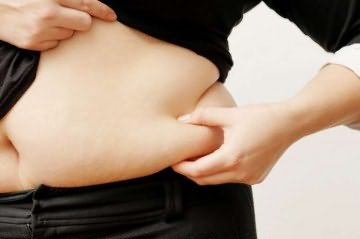
Proper nutrition is impossible without eating fish - all nutritionists agree on this. She is an excellent supplier of proteins, beneficial microelements and vitamins. But for those who are forced to count calories, only low-fat varieties of fish are suitable, the most suitable for diet, in case of excess weight, hypertension, high blood pressure and similar problems. You should also avoid smoked or fried fish fillets, or prepare them in a special way.
What fish is considered low-fat?
The percentage of fat content in dietary fish fillets should not exceed four units. Cod is unanimously considered the leanest fish, containing only 0.3 g of fat per hundred grams of product. Next come haddock and pollock (0.5 g/100 g), hake (0.8 g/100 g), pollock (2 g/100 g), roach, pike and bream (3-4 g/100 g). A large percentage of the composition here is occupied by protein, which is much easier to digest and much more difficult to convert into fat deposits. Also, low-calorie fish fillets contain amino acids, B vitamins, selenium and phosphorus, iodine and calcium and a number of other useful substances.
White lean fish is indicated for those who are at risk of heart disease, heart attacks and strokes. It significantly reduces the likelihood of such pathologies occurring. Those who regularly eat lean fish fillets have an excellent cardiac system as a whole; they do not suffer from arrhythmia or pressure surges. Such people have a good metabolism and do not have problems with high cholesterol or excess weight. They suffer less from chronic fatigue syndrome, absent-mindedness and forgetfulness.
Rules for eating low-fat fish for diet
Lean fish for the diet can be included in the diet every day, 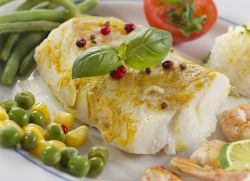 The recommended dosage is no more than 300 g of fish daily. Fish fillets can be baked, stewed or boiled, but not fried, otherwise the fish is saturated with unnecessary additional fats, carcinogens and loses a huge part of its vitamins. The ideal side dish for it would be vegetables in any form or some low-calorie foods, for example, low-fat cheeses, which are more or less acceptable on a weight loss diet. It is imperative to take into account the total calorie content of fish dishes, and not the energy value of just one product. Heat treatment of fish should last at least 20 minutes; large carcasses should be cooked, cut into portions.
The recommended dosage is no more than 300 g of fish daily. Fish fillets can be baked, stewed or boiled, but not fried, otherwise the fish is saturated with unnecessary additional fats, carcinogens and loses a huge part of its vitamins. The ideal side dish for it would be vegetables in any form or some low-calorie foods, for example, low-fat cheeses, which are more or less acceptable on a weight loss diet. It is imperative to take into account the total calorie content of fish dishes, and not the energy value of just one product. Heat treatment of fish should last at least 20 minutes; large carcasses should be cooked, cut into portions.
What to choose?
For people who watch their diet, fish is an indispensable product. But which one should you prefer? Of course, the most dietary and healthy option would be low-fat fish. Unlike fatty varieties, it contains more protein and phosphorus, and, accordingly, less harmful fat.
What are the benefits of lean fish?
We have already found out that this type is healthier than its fatty counterparts. But what exactly? Firstly, the protein content in it is at least 15%, and there is no more than 4% fat. Secondly, lean fish is the best source of phosphorus and selenium. It also contains large amounts of calcium, which helps in strengthening bones, nails and hair. And B vitamins, which this type of fish also abounds in, are involved in tissue respiration and normalization of metabolism. Lean sea fish also contains a sufficient amount of iodine, which is necessary for the normal functioning of the thyroid gland and the production of hormones.
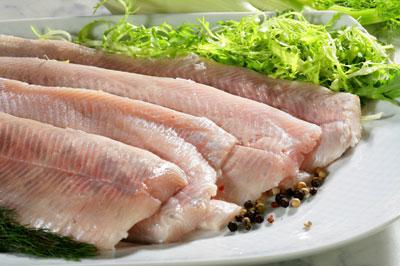 Which fish is low-fat?
Which fish is low-fat?
These types of fish are also called skinny, and their fat content does not exceed 4%. These include halibut, cod, silver hake, haddock, bream, mullet, pike, flounder, cod, pollock, navaga, pollock, blue whiting, pike perch, river perch, roach, as well as all types of shellfish, crayfish, crabs and shrimp. The least fatty fish listed is cod, since it contains only 0.3% fat. The calorie content in one hundred grams of such fish is no more than 90 kcal, so you can eat it as much as you like without fear of gaining weight.
How to cook lean fish?
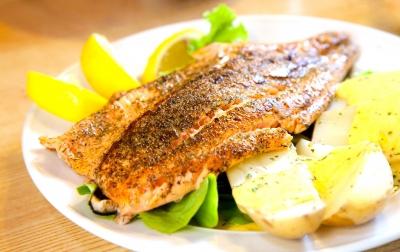 Baked hake recipe
Baked hake recipe
Perhaps, The best way for cooking fish - baking. In this case, there is no need to use oil, which does not increase the fat content of the finished dish, and it turns out much juicier than after cooking and retains most of the beneficial properties. Therefore, I suggest trying to bake hake in the oven. For this we need:
- 1 kg hake.
- 1 lemon.
- bunch of dill.
- a bunch of parsley.
- 2 cloves of garlic.
- marjoram.
- soy sauce.
Preparation
First, you need to marinate the fish; for this, pour 1 kg of hake fillet with 5 tablespoons soy sauce, add the juice of one lemon, finely chopped dill and parsley, 2 tablespoons of dry marjoram and two squeezed cloves of garlic. Soak the fish thoroughly in the marinade and leave it in the refrigerator for half an hour. After this, put it together with the marinade in a baking dish and place it in an oven preheated to 200 degrees for half an hour. Best served with rice and fresh vegetable salad. Bon appetit!
All diets, without exception, require giving up fatty foods, forcing you to buy lean meat and look for milk, kefir and cottage cheese with 0% fat content on store shelves. But there is almost the only product saturated with fat that most weight loss systems allow - fish.
Entire treatises have been written about the benefits of polyunsaturated fats: they help the heart, blood vessels, brain, joints, and many other parts of the body. Moreover, unlike meat, fish is digested much better. But even this needs to be chosen correctly. Many weight loss methods one way or another recommend paying attention to lean fish for the diet in order to reduce the total calorie content of the daily diet. But not everyone knows which specific types of fish are best to eat and what dietary dishes can be prepared from them.
Which low-fat fish should you choose for your diet?
By and large, all types of fish are divided into three large groups, divided by degree of fat content. The first, most “heavy” ones include herring, mackerel and salmon. They, of course, should be eaten, but as rarely as possible. And during active weight loss, it is not recommended to include them in the menu. Moreover, during a diet there is always something to replace such fish.
The second group, “optimal”, is the seven of carp, tilapia, trout, pangasius, sturgeon, tuna and sardine. Representatives of this fish union can be served during a diet both during the period of maintaining weight and during the period of weight loss. But if the method of eliminating fat involves a too low-calorie diet, you may need to eliminate them too.
The third group, “skinny” fish: cod, perch, flounder. When dieting, they are considered the most preferable. In addition, they are also suitable during therapeutic nutrition, when it is necessary to reduce the load on digestive system. These include various sea creatures: squid, shrimp and the like. The average calorie content of these specimens is 65 kcal per 100 g.
The best dietary fish dishes
Now let's look at a few simple but delicious recipes with dietary fish, which are suitable for almost any weight loss system. But basically they are designed for correct healthy eating with reduced calorie content. All dietary fish dishes are boiled, baked or stewed. Fried options are swept aside. This not only allows you to maintain the maximum concentration of beneficial properties, but also facilitates the absorption of the product.
Recipe No. 1
A great idea for dinner would be a tandem of cod and vegetables. To prepare it, you need to take a medium-sized zucchini, peel it from seeds and skin, and chop it into cubes. Wash the carrots, peel and grate on a coarse grater. Cut the onion into half rings. Peel a kilogram of cod from bones and skin, rinse thoroughly, and disassemble into small pieces. Salt and grate with spices to taste. Leave for half an hour.
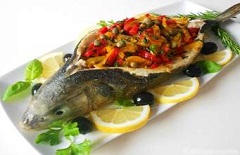 In a foil or ceramic dish with a lid, first place a layer of zucchini, then a layer of fish, on top of another layer of zucchini and carrots, then onions. In a small bowl, mix two egg whites and a tablespoon of sour cream, pour this sauce over the mixture of fish and vegetables. Place the dish in a cold oven. Cook for half an hour from the moment the oven preheats to 175°C. After this, sprinkle the dish with herbs and grated cheese and bake for another 15 minutes.
In a foil or ceramic dish with a lid, first place a layer of zucchini, then a layer of fish, on top of another layer of zucchini and carrots, then onions. In a small bowl, mix two egg whites and a tablespoon of sour cream, pour this sauce over the mixture of fish and vegetables. Place the dish in a cold oven. Cook for half an hour from the moment the oven preheats to 175°C. After this, sprinkle the dish with herbs and grated cheese and bake for another 15 minutes.
Recipe No. 2
TO festive table can be submitted dietary dish made from fish with an unusual sweet and sour taste. You will need about a kilogram of rainbow trout, which needs to be cleaned of entrails and bones, washed, divided into large pieces and salt it. Place the fish in a large ceramic dish.
Peel the skin of a large orange and chop finely. Perform the same manipulations with lemon and lime. Mix the pulp in a small cup and add a tablespoon of olive oil. Let sit for 5-7 minutes and transfer this mixture onto the fish. Cover the container with a lid and place in a preheated oven. Bring to readiness for half an hour.
Recipe No. 3
Pangasius can also be considered an acceptable fish for the diet. Its tender fillet makes excellent meatballs, which are used to make soup. It is necessary to grind 400 g of fish through a meat grinder, add salt and pepper, combine with egg white and half a finely chopped onion. Form small balls and roll them in breadcrumbs.
In a large saucepan with thick walls, bring 3 liters of water to a boil, add salt and add the meatballs. Cut a couple of potatoes into cubes, grate one medium carrot, and chop the remaining half of the onion. Place the vegetable mixture in the pan and cook for 45–50 minutes. Serve with greens.
Recipe No. 4
An excellent choice of low-fat fish for a weight loss diet is pike, which is undeservedly ignored. It makes delicious cutlets that are in no way inferior in nutritional value to meat cutlets. Pike fillet is passed through a meat grinder along with onion and a piece of dried white loaf. Add grated carrots, one chicken egg, salt and pepper to taste. A dense elastic lump is formed from which cutlets are molded. They can be cooked in a double boiler, or you can use the oven, wrapping the dish in foil and adding a quarter glass of water so as not to dry out the dish.
Recipe No. 5
A good lunch of vegetables and fish during the diet is based on boned and skinned tilapia fillets. It will need to be disassembled into small pieces and marinated in lemon juice. At this time, the steam is cut into rings bell peppers and one onion, chop three large tomatoes, tear a sprig of parsley into leaves. The dish can be prepared either in a slow cooker or in the oven.
For the first option, just put a mixture of fish and vegetables in a multicooker and turn on the “stewing/simmering” mode for 45 minutes. For the second, place all the components of the dish in a ceramic pot, cover with a lid, and put it in a cold oven. Bring until ready to serve for an hour at 175°C.
Of course, you can find and come up with much more dietary recipes with fish. There are no restrictions here. The only thing is that it is advisable to combine seafood with vegetables, and not cereals and flour products. This combination can truly be considered dietary recipe with fish, as well as an easily digestible and healthy dish.

